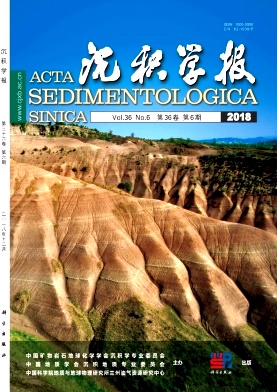Preliminary Application of Grain Size End Member Model for Dust Source Tracing of Xinjiang Loess and Paleoclimate Reconstruction
doi: 10.14027/j.issn.1000-0550.2018.087
- Received Date: 2017-09-18
- Rev Recd Date: 2017-12-02
- Publish Date: 2018-12-10
-
Key words:
- grain size end-member /
- grade-standard deviation /
- Xinjiang loess /
- dust source /
- climatic events
Abstract: Grain size as an important proxy that reflects sedimentary provenance, transport, and deposition processeshas been widely used to reconstruct paleoclimatein loess, lacustrine, and marine sediments. There are two methods to present the result of grain size analysis:the parametric method, which analyzes grain size parameters, and the graphical method, which analyzes the frequency curve. Conceptually, the observed grain size distribution can be regarded as a mixing process of a finite number of end members, which in turn leads to a complex spectrum, commonly with a multimodal and asymmetrical form. Therefore, a method to decompose the different fractions becomes necessary. Although different methods of decomposing grain-size fractions have been successfully applied in the Chinese loess plateau, central Asia loess, which is under the control of westerlies, Siberian high pressure, and the Polar Front, may record complex dynamic processes. This study has analyzed the grain size of the XEBLK section in the Ili Basin, Xinjiang. Using the Bayesian end-member modeling analysis (BEMMA) and graded standard deviation (GSD) methods, the sensitive fractions of grain size and their significance for dust source have been examined. The results of the GSD method distinguish three fractions:0.4-31.7 μm (fine), 31.7-282.5 μm (middle), and 282.5-709.6 μm (coarse). Linearregressions indicate that the content of the middle fraction has a higher coefficient with mean grain size. This fraction implies that dust disperses into different high-altitude atmospheric layers downwind. The middle fraction reflects the component that becomes suspended a few hundred meters above the surface during dust storms and is carried over a distance of roughly 1 000 km. Therefore, the middle fraction is a particularly sensitive paleoclimate proxy. The coarse fraction may indicate the frequency of strong dust storms. The results from BEMMA distinguish three fractions:End Member(EM)1, EM2, and EM3. EM1(modal grain size:21.22 μm)may represent fine dust in the air background that reflects information on high-level atmospheric circulation. EM2 (modal grain size:75.29 μm) representsthe proximal fraction from river sedimentation. EM3 (modal grain size:47.5 μm) also represents a suspended fraction from nearby proximal sources, but this fraction was probably produced during an aeolian abrasion process. By analyzing the relationship between the fractions and the median grain size of bulk samples, EM2 was found to have the highest correlation coefficient. Therefore, EM2 is probably a more sensitive paleoclimate proxy than the other two fractions. EM2 not only records climatic rapid fluctuation since Marine Isotope Stage (MIS)2, but also provides evidence that Xinjiang loess has recorded the Heinrich, Younger Dryas, 8.2 ka, and 4.2 ka events. In summary, the BEMMA and GSD grain-size analysis methods can be used to trace the dust source of loess and to perform paleoclimate reconstruction in the Ili Basin. This paper provides new insights into dust sources and paleoclimate in Central Asia.
| Citation: | CHENG LiangQing, SONG YouGui, LI Yue, ZHANG ZhiPing. Preliminary Application of Grain Size End Member Model for Dust Source Tracing of Xinjiang Loess and Paleoclimate Reconstruction[J]. Acta Sedimentologica Sinica, 2018, 36(6): 1148-1156. doi: 10.14027/j.issn.1000-0550.2018.087 |






 DownLoad:
DownLoad: